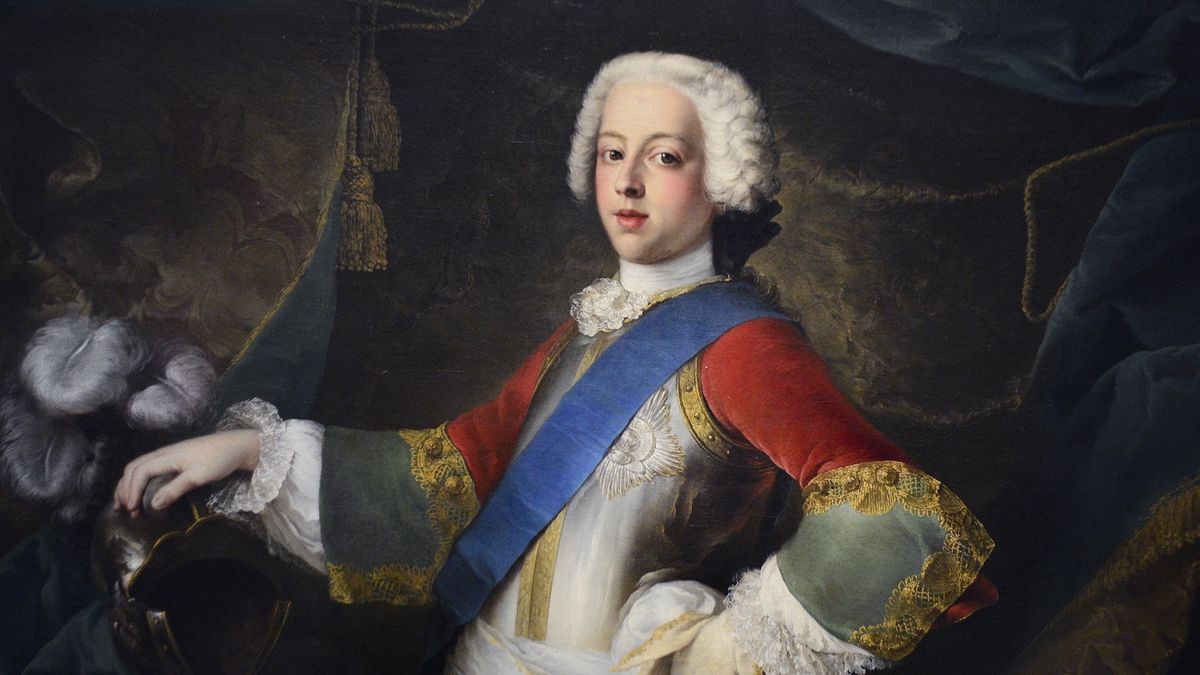Nearly 280 years ago, as legend goes, a would-be assassin tried to kill Bonnie Prince Charlie, who led a failed rebellion of Scots against the British crown in 1745. Now, the discovery of a musket ball hole that pierced a bedroom wall inside a historic Scottish landmark offers concrete evidence that the assassination attempt really happened.
In April, volunteers doing conservation work at Bannockburn House, a historic home situated between Glasgow and Edinburgh where the Bonnie Price once stayed, received a valuable tip: The relative of a former housekeeper told them about a “secret panel” hidden beneath “delicate plaster work” depicting images of mermaids and multiple layers of “ancient wooden paneling.” The volunteers soon found the hole, which offers a “grim reminder of a previously undocumented assassination attempt” against Bonnie Prince Charlie, according to a statement from Bannockburn House.
“[We] noticed what appeared to be the edge of an inset panel in the wall when cleaning out the room furniture recently for conservation,” Catherine Bradley, lead volunteer researcher at Bannockburn House, said in the statement. “It is across from a window, now hidden by paneling later put in the room sometime in the 1880s. … It was an exciting moment as I opened it. I carefully lifted the panel and saw the splintered wood and I knew we’d found something very special.”
The near miss occurred during the Jacobite Rebellion of 1745 (also known as the Jacobite Uprising), in which Bonnie Prince Charlie (whose formal name was Charles Edward Stuart) fought to regain the throne of his Roman Catholic grandfather, who had been deposed by his Protestant son-in-law during the Glorious Revolution of 1688, according to Visit Scotland. However, the rebellion failed, and Stuart later fled to France.
Based on oral traditions of the incident, it was said that an unnamed assassin “fired a shot through the [first floor] bedroom window, missing Bonnie Prince Charlie as he slept and lodged itself in the wall at the head of the bed,” according to the statement.
Related: 8 stone catapult shots linked to King Henry III discovered at besieged British castle
For centuries, the “tantalizing legend” was passed down from one generation to the next, but no one knew for sure whether it was true, according to the statement.
“I have visited the bedroom many times over the years and always tried to imagine the prince and the resulting confusion from the musket fire and sounds of smashing glass alerting everyone to the assassin,” Murray Cook, a Stirling Council archaeologist who confirmed the hole’s authenticity, said in the statement. “However, to see the damage and to touch the spot sent a thrill down my spine.”
The new finding coincides with Stirling 900, a yearlong event that celebrates the 900th anniversary of Stirling as a royal burgh founded by King David I in 1124, according to Scene Stirling.
“After years of hearing the story, it’s been fantastic to finally verify the existence of the musket ball hole,” Anne Monaghan, history team lead at Bannockburn House, said in the statement.





















Discussion about this post